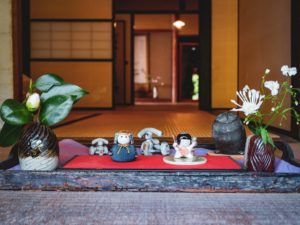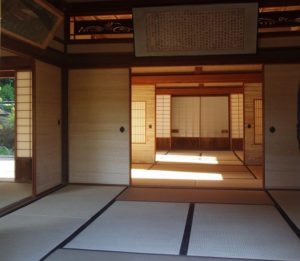Japanese minimalism is all the rage these days. But what exactly is it? In simple terms, Japanese minimalism is an interior design style that focuses on simplicity and functionality. This style has been gaining popularity due to its clean aesthetic and stress-free atmosphere. Interior house painting for this style is simple, so you don’t need to hire anyone. If you’re interested in bringing some Japanese minimalism into your own home, read on for practical tips.
Learn the Minimalist Japanese Design Principles
 There are four main principles of Japanese minimalism, including simplicity, functionality, natural materials, and clean lines. Simplicity is the essential principle of all. Japanese minimalism is about stripping down your space to only the essentials. It means getting rid of any clutter or excess furniture. You should also avoid using too many colors or patterns. Instead, stick to a neutral color palette. Functionality is another fundamental principle of Japanese minimalism. Every item in your home should have a purpose and be easy to use.
There are four main principles of Japanese minimalism, including simplicity, functionality, natural materials, and clean lines. Simplicity is the essential principle of all. Japanese minimalism is about stripping down your space to only the essentials. It means getting rid of any clutter or excess furniture. You should also avoid using too many colors or patterns. Instead, stick to a neutral color palette. Functionality is another fundamental principle of Japanese minimalism. Every item in your home should have a purpose and be easy to use.
For example, you might use a low wooden tray that can double as a footrest or extra seating instead of a coffee table. Natural materials are also crucial in this style. Wood, stone, and plants are common elements in Japanese minimalist homes. Finally, clean lines are essential to achieving a minimalist look. This means avoiding ornate or detailed furniture and decorations. Instead, opt for simple, geometric shapes.
Bring Elements of Wood and Bamboo Into Your Interior
One of the easiest ways to add some Japanese minimalism into your home is by incorporating natural materials like wood and bamboo. Wood furniture is a staple in this style of interior design. Bamboo is also a common element in Japanese homes. You can use it to create everything from flooring and walls to window treatments and furniture. If you’re not ready to commit to bamboo, you can also bring in some elements of nature by adding plants to your space.
Add the Japanese Sliding Doors or Screens
 Finally, you can’t complete the Japanese minimalist look without adding some sliding doors or screens. These are typically made of wood and paper and are used to divide up space in a room. They’re also a great way to add some privacy to your home. Japanese sliding doors or screens can be found at most home improvement stores. Sliding doors are a great way to add Japanese minimalism to your home. So there you have it, some practical tips for bringing Japanese minimalism into your home. Just remember to keep it simple, functional, and natural for the best results because these are the keys to absolute minimalism in Japanese.
Finally, you can’t complete the Japanese minimalist look without adding some sliding doors or screens. These are typically made of wood and paper and are used to divide up space in a room. They’re also a great way to add some privacy to your home. Japanese sliding doors or screens can be found at most home improvement stores. Sliding doors are a great way to add Japanese minimalism to your home. So there you have it, some practical tips for bringing Japanese minimalism into your home. Just remember to keep it simple, functional, and natural for the best results because these are the keys to absolute minimalism in Japanese.
